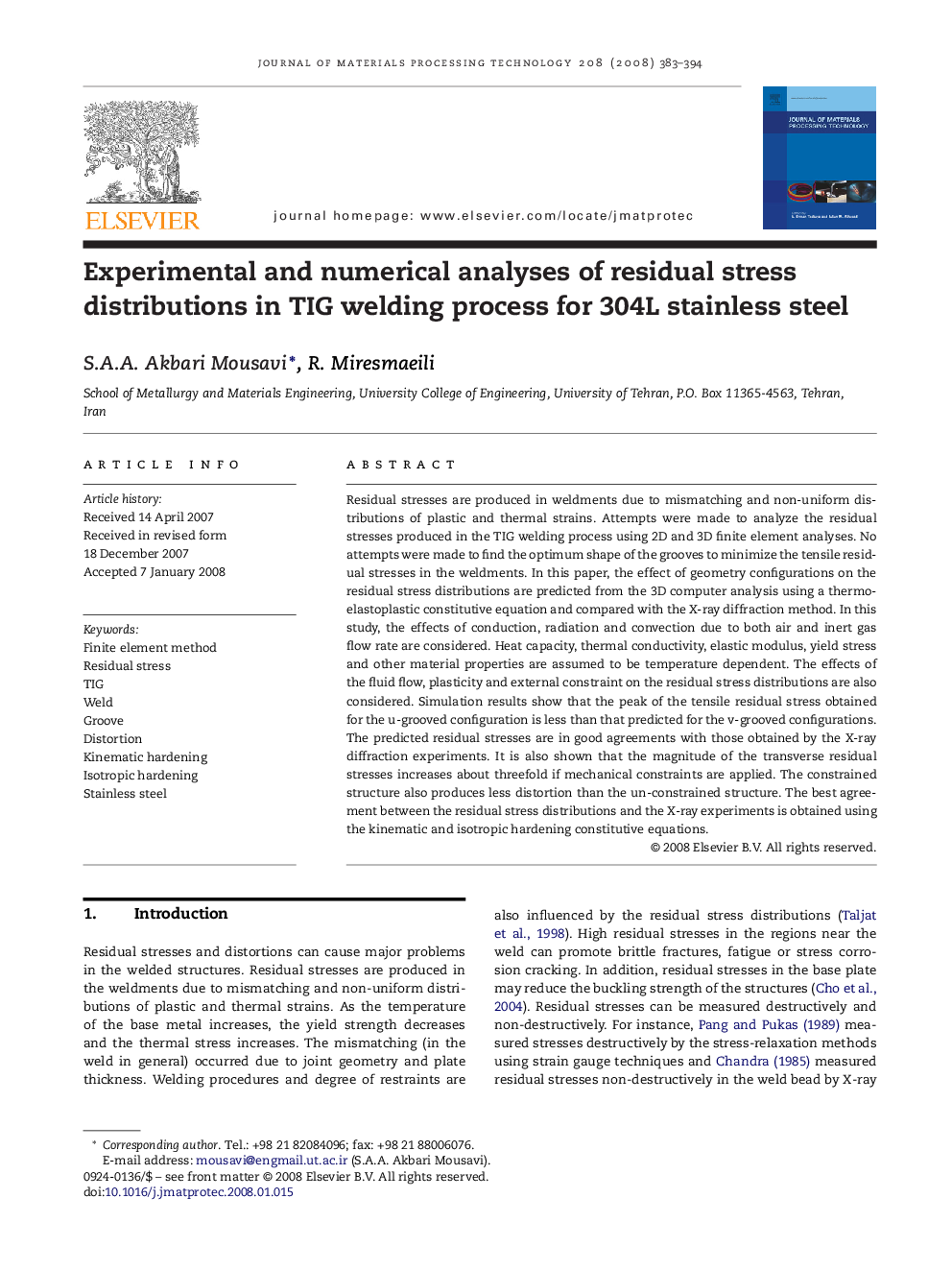| کد مقاله | کد نشریه | سال انتشار | مقاله انگلیسی | نسخه تمام متن |
|---|---|---|---|---|
| 795172 | 1466758 | 2008 | 12 صفحه PDF | دانلود رایگان |

Residual stresses are produced in weldments due to mismatching and non-uniform distributions of plastic and thermal strains. Attempts were made to analyze the residual stresses produced in the TIG welding process using 2D and 3D finite element analyses. No attempts were made to find the optimum shape of the grooves to minimize the tensile residual stresses in the weldments. In this paper, the effect of geometry configurations on the residual stress distributions are predicted from the 3D computer analysis using a thermo-elastoplastic constitutive equation and compared with the X-ray diffraction method. In this study, the effects of conduction, radiation and convection due to both air and inert gas flow rate are considered. Heat capacity, thermal conductivity, elastic modulus, yield stress and other material properties are assumed to be temperature dependent. The effects of the fluid flow, plasticity and external constraint on the residual stress distributions are also considered. Simulation results show that the peak of the tensile residual stress obtained for the u-grooved configuration is less than that predicted for the v-grooved configurations. The predicted residual stresses are in good agreements with those obtained by the X-ray diffraction experiments. It is also shown that the magnitude of the transverse residual stresses increases about threefold if mechanical constraints are applied. The constrained structure also produces less distortion than the un-constrained structure. The best agreement between the residual stress distributions and the X-ray experiments is obtained using the kinematic and isotropic hardening constitutive equations.
Journal: Journal of Materials Processing Technology - Volume 208, Issues 1–3, 21 November 2008, Pages 383–394